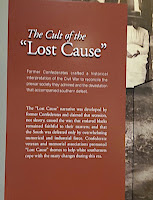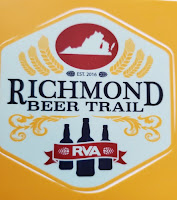In this, the Barnes Museum’s centennial year, the art community can look back in awe at all that the museum has undergone and has continued to maintain an impressive international footprint. The Barnes Foundation was the creation of one man, Albert C. Barnes, who set out to amass a collection representative of a variety of nations, genres and mediums. He was not born wealthy but attended Central High School and worked his way through University of Pennsylvania Medical School in the 1890s. He turned to research and with a partner created a drug called Argyrol that made him wealthy by the age of 35. In 1908 he became sole owner of his company and instituted a 6-hour workday, a racial and gender integrated workforce, and a 2-hour daily optional education program.
Barnes true first love was art but he felt that he would never be fully accepted into Philadelphia’s art world. In 1910 he turned that love of art into amassing a collection of artworks. He chose painters Alfred Maurer and William Glackens to travel to Paris and purchase paintings for him. They were given $20,000 ($350,000 today) and returned with 30 paintings by artists such as Cezanne, Renoir and van Gogh. Barnes later decided to travel to Europe to make his own purchases and he was prolific. From 1922-23 he purchased more than 100 Impressionist, Post-Impressionist, Modern and African material cultural artworks including pieces by Modigliani, Picasso and Matisse. barnesfoundation.org
In 1922 Barnes established an educational foundation, he did not consider it a museum, and in 1925 he opened his newly constructed neoclassical mansion and 12-acre arboretum in Merion, a suburb of Philadelphia, as its headquarters and home to his extensive collection displaying European art along with Native American, American, African decorative arts and furniture. His primary goals were to make art accessible to all and promote social justice and educational opportunity for the masses. He hired professors to provide free lectures at the foundation and allowed access to school groups and interested individuals.
Albert Barnes challenged not only what is considered artistic and who should have access to art but also ways art can be perceived. He displayed his artworks in what he referred to as ensembles. In these arrangements he mixed works from varying eras, cultures and genres inviting viewers to make connections according to style, color and shape. Paintings are identified solely by the name of the artist. Dates and explanatory information is not listed.
Barnes is considered one of the first individuals to collect and display African art as not merely ethnographic collectables. He deemed African art as representative of the “highest form of 3-dimensional expression” and was involved in the Harlem Renaissance as a promoter of the preservation of African arts and artists through his writings and conversations with African American intellectuals. Horace Bond, Lincoln University’s first African American president, developed a close friendship and working relationship with Barnes in the 1940s. Realizing the significant challenges the all black university faced he developed specialized art programs and invited students for visits. In his will he specifically added a clause that “racist” universities were barred from admission to his collection.
Unique rules controlled the collection even after his death in 1951. The number of visitors was restricted and no copies of the works were to be duplicated on mugs, postcards or photos or other gift shop type objects. The works themselves were never to be moved from their original gallery positions, nor could they be individually sold or placed on loan.
Almost immediately after his death the City of Philadelphia challenged his will claiming that the art should benefit everyone. In 2009, after extensive litigation, the city seized the artworks, now worth approximately $25-bllion. The battle over the collection is detailed in a documentary, The Art of the Steal. In 2012 the collection was moved to a new, $150-million building on the Benjamin Franklin Parkway in Philadelphia. The 4.5-acre complex includes classrooms, additional exhibition space, an atrium and a public park. At its heart is a replica of the original Barnes Foundation building featuring galleries and displays exactly as they were in Merion. Artworks have been positioned with no object more than 1/2-inch from its former placement.
The museum functions as a stunning setting for the largest collection of impressionist art in the world including 179 Renoirs and 69 Cezanne’s. Visitors can be overwhelmed by the more than 4,000 rare artworks but you should seek out:
• "Bathing Group" (Renoir)
• "The Dance" (Matisse)
• "The Card Players" (Cézanne)
• “The Postman” (Vincent van Gogh)
• “Redheaded Girl in Evening Dress” (Modigliani)
• “Dr. Albert C. Barnes” (Giorgio de Chirico)
Until September 4, 2022, as part of the Barnes Centennial celebration, and in keeping with the spirit of challenging the artistic narrative and inclusivity, the foundation has commissioned a film installation by artist and filmmaker Sir Isaac Julien, CBE RA. Isaac Julien: Once Again … (Statues Never Die) is a five-screen installation that delves into the philosophical relationship between Albert Barnes, as a collector of African art, and Alain Locke, African American scholar, author and creator of the concept of the New Negro. Through dialog and reenactments Sir Julien revisits how the African American art was obtained, black artists creating their art in other cultures and what is the meaning for and the impact of African art on western culture. The looting of Benin in 1897 provides a contemplative background for the modern concept of reparations. The film is both artistically arresting and thought provoking. Accompanying the film will be significant African art sculptures.
Albert Barnes art collection is of international importance and through these works modernism entered the Western World. He surrounded himself with beauty, cultivated friendships from all cultures and promoted the importance of art as education. He shaped his own narrative and we are all the better for it. @barnesfoundation
“That is one of the joys of a collection, the elasticity with which paintings stretch to the beholder’s personal vision which they progressively develop.” Albert C. Barnes




























